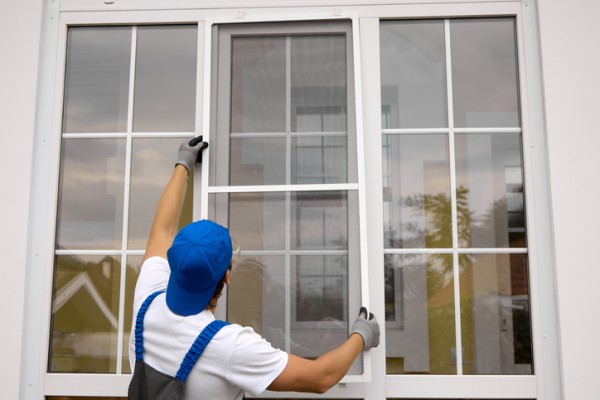
Windows are long-term investments that require regular maintenance to keep them functioning safely and efficiently. Exposure to wind, rain, sunlight and seasonal changes can degrade seals, frames, and moving parts over time—particularly in Australia’s varied climates.
Why window maintenance matters
Poorly maintained windows can:
- Develop air and water leaks
- Reduce thermal and acoustic performance
- Increase condensation and mould risk
- Compromise safety and security
With minimal effort, regular window maintenance can significantly extend window life and help meet the ongoing performance expectations of modern building codes like the National Construction Code (NCC) 2022.
Maintenance checklist
1. Frame and surface care
- Clean frames and sills regularly to remove debris and pollutants.
- For aluminium frames, wash with mild detergent and rinse thoroughly.
- Timber frames should be checked for cracks, rot or peeling paint; reseal or repaint as needed.
- uPVC frames require gentle cleaning with non-abrasive solutions.
2. Seal and gasket inspection
- Check seals and gaskets every 6 to 12 months, especially before winter.
- Replace any cracked or brittle rubber to maintain airtightness and reduce condensation risk.
3. Glazing checks
- Inspect glass for chips or cracks that may compromise safety or performance.
- Ensure windows that require safety glazing (e.g. within 2m of floor level, or in kitchens and bathrooms) comply with AS 1288 and NCC Part 8.4.
- Confirm 4mm toughened glass does not exceed the 2m² area limit.
4. Hardware and moving parts
- Lubricate hinges, tracks, locks and rollers at least once a year.
- Check fasteners and fixing points for corrosion or loosening.
5. Ventilation and condensation management
- Clean and unblock trickle vents and louvres.
- Check exhaust fans (especially in kitchens and bathrooms) are vented externally, run for 10 minutes after use and have adequate make-up air per NCC Part 10.6.
- Check for signs of mould or excess condensation and ensure proper vapour control measures are in place.
6. Installation integrity (for older homes or recent installs)
- Confirm a 10mm head clearance above window frames to allow for structural movement.
- Ensure packers and strap fixings are present and not compromised by water ingress.
High-performance glazing care
Windows with low-e coatings, laminated layers or films may require special cleaning techniques:
- Use a soft cloth with non-abrasive cleaner.
- Avoid ammonia-based products that may damage coatings.
- For laminated and double-glazed units, avoid excessive water around the edges to prevent seal failure.
Suggested diagrams
- Cross-section of window installation showing head gap, packers and flashing
- Seal and gasket types with wear signs
- Ventilation flowchart: exhaust fan + trickle vent + make-up air
- Labelled frame cleaning diagram: timber vs aluminium vs uPVC
By including window maintenance in your seasonal home care routine, you can avoid costly repairs, improve comfort, and keep your windows compliant with the latest building standards.




